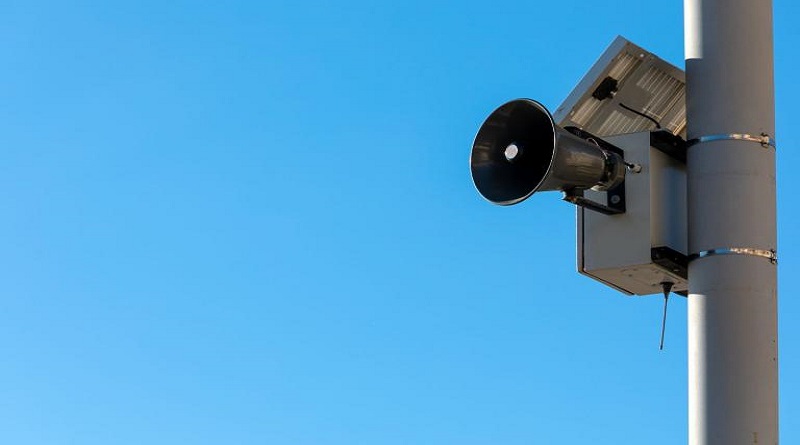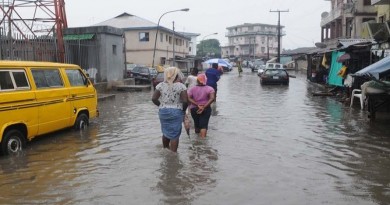COP29: Harness digital technology to reach everyone with early warnings
The first week of the UN Climate Change conference, COP29, wrapped up with a ringing endorsement of the Early Warnings For All initiative and a call to action to use the power of communication technologies to protect communities around the world from increasingly dangerous weather.
A digital collage featuring a large smartphone with floating hexagonal icons, depicting technology and communication, in front of a background of server racks.
An event hosted by the COP29 Presidency on Science, Technology, and Innovation/ Digitalization Day highlighted the need to harness digital technologies to ensure that early warnings are accurate, accessible and reach everyone, leaving nobody behind.
“Early warning services should be based on, and guided by, the best available science and technologies,” said Umayra Taghiyeva, Deputy Minister of Ecology and Natural Resources of Azerbaijan. The country has recorded 109 floods already this year, and heatwaves are becoming more frequent, longer and more intense.
The benefits are clear. Just 24 hours warning of a coming storm or heatwave can reduce the potential damage by 30% according to WMO, she said. In the case of Azerbaijan, early warnings of the onset of heatwaves have made it possible to significantly reduce the number of ambulance calls for heat and sunstroke.
The COP29 Presidency event concluded a series of top-level events on Early Warnings For All, highlighting the urgency of the initiative.
The need is urgent. The year 2024 is on track to be the hottest on record, with extreme weather events occurring on a weekly – if not daily basis. The Philippines has been pounded by five tropical cyclones in a month. Spain has been repeatedly hit by record-breaking rain. And tropical storm Sara brought torrential flooding and the risk of landslides to Honduras in Central America.
“Even if we succeed in staying below the 1.5°C threshold, the impacts of climate change still require robust adaptation measures. Universal access to Early Warning Systems is not just a safety net; it is a necessity,” said WMO Secretary-General Celeste Saulo.
Early Warnings for All is led by the UN Office for Disaster Risk Reduction (UNDRR), the WMO, the International Telecommunication Union (ITU) and the International Federation of Red Cross and Red Crescent Societies (IFRC). Under this umbrella approach, each organization is responsible for a specific pillar of work, respectively: disaster risk knowledge; observation, monitoring and forecasting; warning dissemination and communication; and preparedness and response.
“If we fail to take advantage of the Early Warnings for All initiative, we don’t know when a second chance might appear. That is why it is critical that all countries and organizations fully support its implementation,” said Kamal Kishore, Special Representative of the United Nations Secretary-General for Disaster Risk Reduction, and Head of the United Nations Office for Disaster Risk Reduction (UNDRR).
Digital technologies represent a key area for collaboration with the private sector, offering significant potential to scale early warning systems.
“We must use every tool in our toolbox to ensure warnings reach everyone at risk in time to take life-saving action,” said ITU Secretary-General Doreen Bogdan-Martin. “COP29 is our wake-up call to double down on technology support, capacity building and financing to deliver Early Warnings for All before it’s too late,” she said.
GSMA, the global mobile operators association, is a key partner of the EW4All initiative, and Advisory Board member and has been successfully ensuring the involvement and support of mobile operators.
WMO is working with National Meteorological and Hydrological and Meteorological Services to improve the collection and sharing of data and the quality and reach of observing networks.
“We are committed to modernizing and develop adequate forecast systems to improve the quality of forecasts in terms of providing relevant information for decision making and life protection, what we call impact-based forecasts that are able to translate what the weather will look like to how the weather will affect us. This also encompasses putting in place appropriate alerting protocols to standardize and share the information on time,” Celeste Saulo told the high-level event.
Even in the era of Artificial Intelligence and Machine Learning, the human role remains central to Early Warning systems. Without skilled and dedicated personnel, even the most advanced technology and data cannot fulfil their potential.
“From satellites to sandbags, we’re building a seamless line of defense against climate risks. Technology brings us early warnings from above, but it’s the communities on the ground—filling sandbags and building resilience—who truly make these systems work. Our mission with Early Warnings for All is to connect global resources with local action, so that every community, no matter how remote, is prepared for what lies ahead,” said Jagan Chapagain, Secretary-General of the IFRC.




